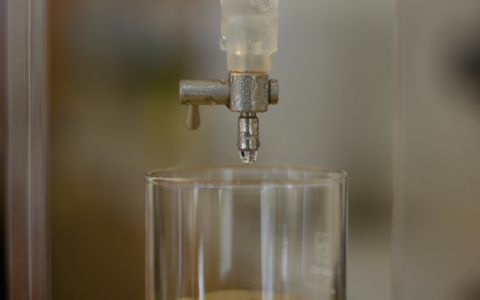The Thai province of Samut Sakhon is highly contaminated with hazardous chemicals. At the international conference on halogenated persistent organic pollutants (POPs) in Poland, an expert on toxic pollution, Akarapon Teebthaisong, from Ecological Alert and Recovery – Thailand (EARTH) presented a recent study showing some of the highest levels on record. The health-threatening dioxins contaminate the food chain of the local inhabitants which threatens food security.
The research mainly focused on free-range chicken eggs taken from the vicinity of the artisanal recycling workshops in Samut Sakhon, as they might be “ideal ‘active samplers’ for the evaluation of the contamination level of polychlorinated dibenzo-p-dioxins, furans (PCDD/Fs), and polychlorinated biphenyls (PCBs),” the report states. In addition, sediments were examined to fully discover the presence of POPs in the environment of local people.
With the results of the analyses, Teebthaisong delivered a lecture at the Dioxin 2018 conference in Krakow, addressing international experts.
Read the abstract of the 'POPs contamination at ‘recycling’ and metallurgical site in Thailand' study
“This study discovers serious contamination within the food chain by various POPs in Samut Sakhon, and the level of these chemicals measured in the eggs is the second highest level (of brominated dioxins) ever measured in chicken eggs globally,” the EARTH member stated, quoting the conclusions of the study.
“The highest content levels of polybrominated dioxins ever recorded were found in eggs from the proximity of the waste incinerator in Wuhan, the capital of Hubei province in Central China,” recalls Jindřich Petrlík, the Executive Director of Arnika – Toxics and Waste Programme. His team sampled the Chinese industrial hot-spots and published the findings in a 2015 publication. Now, the Czech organization also participated in the ‘Thai research.’
The findings from the study confirms that the operating technology of the small-scale metallurgical plants and smelting or artisanal ‘recycling’ factories is often obsolete or utterly primitive. The open burning of waste, including e-waste, in order to reclaim metals is a very usual practice there. These facilities are common sources of unintentionally produced POPs, and therefore, such sites profoundly toxic to the environment.
The authors of the study suggest that the only solution is modern technological improvements such as the installation of filters. Otherwise, the hazardous practices will continue.
“To prevent further releases of these chemicals in Samut Sakhon, it would require better organization and regulation of the facilities in this locality. Some of these facilities should be replaced by more appropriate and clean technology for recycling. Moreover, it would require assistance from the state and responsible authorities to improve both the industrial recycling practices and the monitoring of contamination with POPs to prevent health risks,” states the recommendation.
As Teebthaisong concludes, the approach and future policy of international bodies is crucial, as “this area should be included among other actions in the updated NIP for the Stockholm Convention on POPs,” he believes.
This article was prepared and published as a part of the project “Increasing Transparency in Industrial Pollution Management through Citizen Science” funded by the European Union (EU) and co-funded by the Ministry of Foreign Affairs of the Czech Republic within the Framework of the Transition Promotion Programme – a financial assistance programme supporting democracy and human rights using the Czech Republic’s experience with social transition and democratization.
![]()







